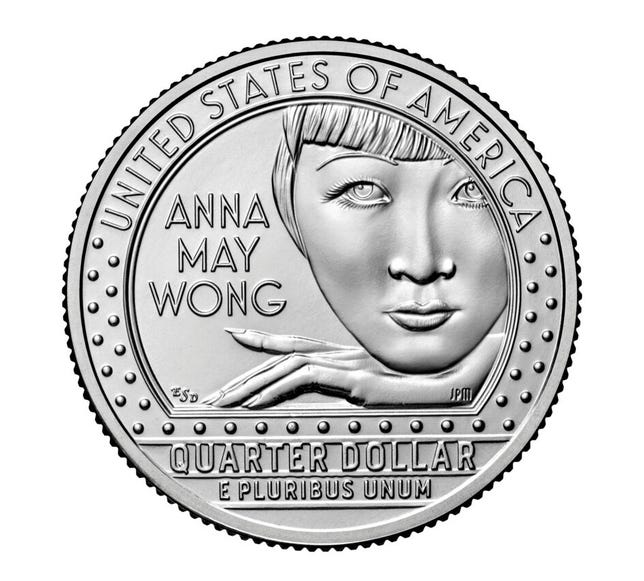Anna May Wong, considered to be Hollywood’s first Chinese American movie star, will be the first Asian American to appear on US currency.
Wong will appear on a new quarter as part of the US Mint’s American Women Quarters Program, which celebrates the accomplishments and contributions made by American women to the development and history of the US in fields such as suffrage, civil rights, abolition, government, humanities , science, space and the arts.
The program honors five distinguished American women each year. This year, Wong will join writer Maya Angelou, astronaut Sally Ride, Cherokee leader Wilma Mankiller and suffrage movement leader Nina Otero-Warren.

Anna May Wong’s portrait on the quarter.
US Mint
The heads side of Wong’s quarter will feature a portrait of George Washington, while the tails side will feature a close-up image of Wong with her head resting on her hand, surrounded by the bright lights of a marquee sign, the US Mint said Tuesday. The quarter will make its debut on Oct. 25.
Over the course of her varied career, which spanned silent movies, sound movies, stage and TV, Wong’s portrayals of Chinese characters helped combat stereotypes among white audiences at a time of overt racism and discrimination.
Wong was born Wong Liu Tsong on Jan. 3, 1905, near Chinatown in Los Angeles. When not in school or working at her father’s laundry, Wong would hang around film crews as movies were being shot in her neighborhood, begging filmmakers to cast her in movies. By the age of 11, she had chosen her stage name — Anna May Wong — and a few years later landed her first role as an uncredited extra in the 1919 movie The Red Lantern.
Despite the positive reviews, racial barriers prevented US filmmakers from offering her anything but small, supporting roles based on racial stereotypes. Tired of being passed over for leading roles, Wong moved to Europe in 1928. There, she made 1929’s Piccadilly, her last silent movie and her first leading role in an English movie, as well as her first talkie in 1930, The Flame of Love . She also appeared on the stage with a young Laurence Olivier.
After her return to Hollywood in 1930, Wong was cast opposite her close friend Marlene Dietrich in 1932’s Shanghai Express, turning in a performance that many film historians judge as being better than Dietrich’s.
She put the first rivet in the Grauman’s Chinese Theater in 1926, but she wasn’t invited to leave prints in the cement. Her contribution to film was marked with a star on the Hollywood Walk of Fame in 1960. Her contributions were also marked by a Google Doodle dedicated in her honor in 2020.
Wong died in 1961.
